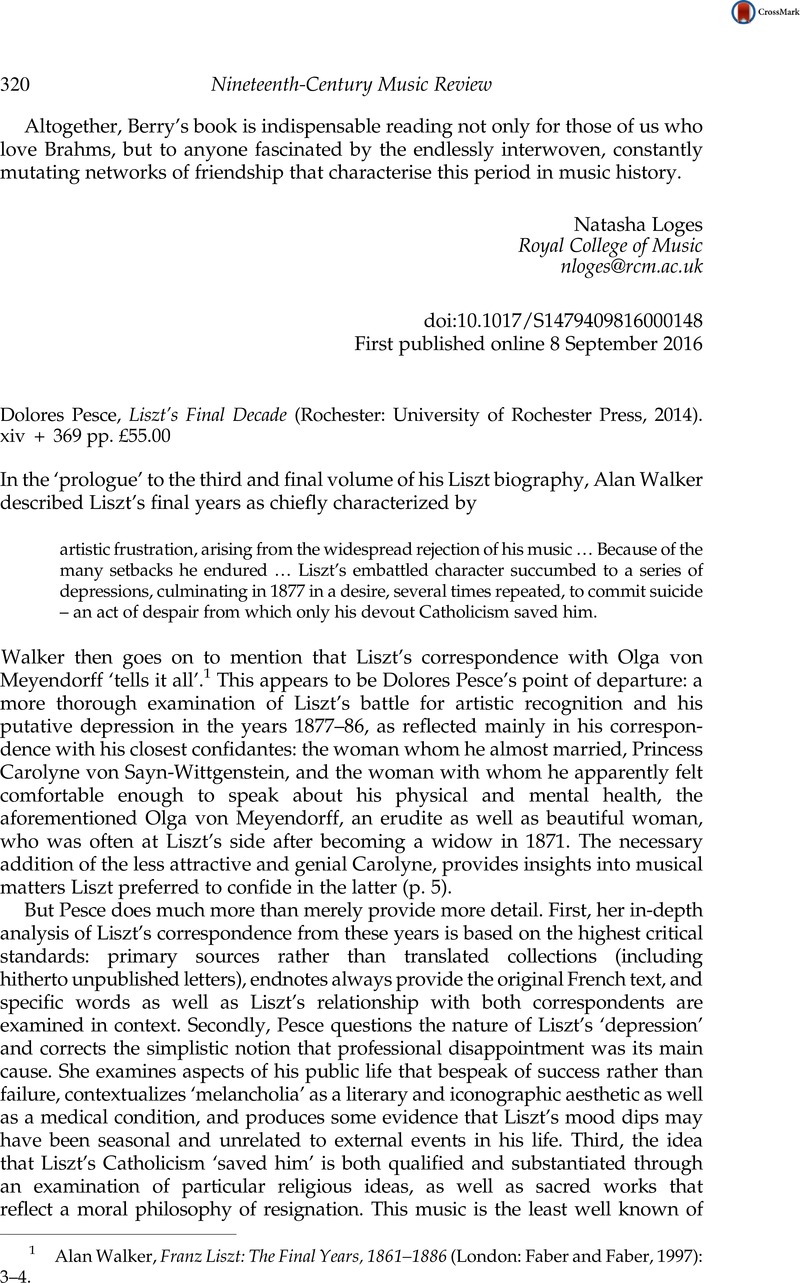No CrossRef data available.
Article contents
Dolores Pesce, Liszt’s Final Decade (Rochester: University of Rochester Press, 2014). xiv + 369 pp. £55.00
Review products
Published online by Cambridge University Press: 04 August 2016
Abstract

- Type
- Book Reviews
- Information
- Copyright
- © Cambridge University Press 2016
References
1 Walker, Alan, Franz Liszt: The Final Years, 1861–1886 (London: Faber and Faber, 1997): 3–4 Google Scholar.
2 A random example: why do the fiercest attacks on Liszt’s Catholic image come from the Hungarian satirical journal Borsszém Jankó in particular? What is the context? I also missed the more familiar (and brilliant) caricature from this journal (6 April 1873), which contains barbed comments on Liszt’s mannerism, image and ‘imposing modesty’ (!).
3 Conversely, this fine argument means he could express existential struggles under generic cover (see for example Hungarian Rhapsody No. 17); and it explains why for post-war rehabilitators of Liszt it was precisely the suppressed, dissonant and post-tonal works that conjured the irresistible image of Liszt as a misunderstood prophet of twentieth-century music.




